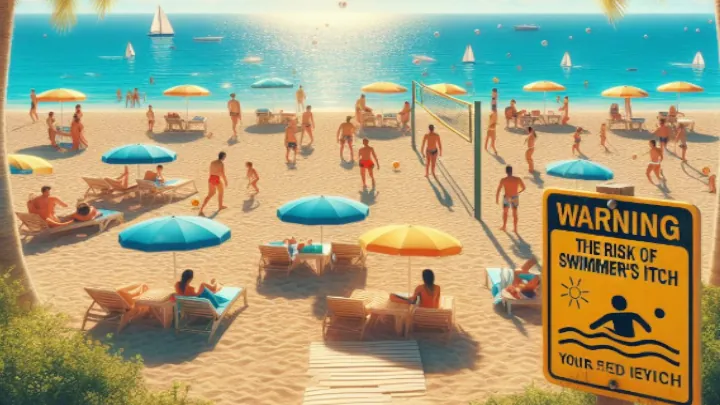Looking for What is the Parasite that Causes Swimmer’s itch. Swimmer’s itch, also known as cercarial dermatitis, is a skin rash that occurs after swimming or wading in water contaminated with certain parasites. The parasite responsible for causing swimmer’s itch is a tiny organism called a cercaria.
Let’s delve into more detail about this parasite and how it causes swimmer’s itch.
What is the Parasite that Causes Swimmer’s itch?
Here we have describe parasites that causes swimmer’s itch-
1. Cercariae
Cercariae are larval forms of certain parasites, specifically flatworms known as schistosomes. These parasites have a complex life cycle that involves multiple hosts, including snails and birds or mammals. When the cercariae are released into the water by infected snails, they actively seek out a suitable host.
2. Life Cycle
The life cycle of the parasite begins when eggs are released into the water through the feces of infected birds or mammals. These eggs hatch into miracidia, which then infect specific species of snails. Inside the snails, the miracidia develop into cercariae. The cercariae are then released into the water, where they swim freely, searching for their next host.
3. Host Seeking Behavior
Cercariae have a unique host seeking behavior. They are attracted to certain chemicals released by potential hosts, such as birds or mammals.
However, when cercariae come into contact with humans, they recognize that humans are not suitable hosts and attempt to burrow into the skin. This burrowing causes an allergic reaction, resulting in the characteristic rash known as swimmer’s itch.
4. Allergic Reaction
When cercariae penetrate the skin, they trigger an immune response in the human body. This immune response is an allergic reaction to the presence of the parasite.
The body releases histamines and other chemicals, leading to the development of redness, itching, and small raised bumps on the skin. The severity of the reaction can vary from person to person.
5. Temporary Condition:
Swimmer’s itch is generally a temporary condition and is not considered a serious health concern. The rash typically appears within a few hours after exposure to contaminated water and may last for several days.
The symptoms usually resolve on their own without medical treatment. However, over-the-counter anti-itch creams or lotions can help alleviate discomfort.
Prevention:
To reduce the risk of swimmer’s itch, it is advisable to avoid swimming in areas where the parasite is known to be present, such as marshy or shallow waters.
Towel drying or showering immediately after leaving the water can help remove any parasites on the skin. Swimming in deeper water, away from the shore, may also reduce the likelihood of encountering cercariae.
Conclusion
In conclusion, swimmer’s itch is caused by cercariae, which are larval forms of certain parasites. These parasites have a complex life cycle involving snails and birds or mammals.
When cercariae come into contact with humans, they attempt to burrow into the skin, triggering an allergic reaction and resulting in the development of swimmer’s itch.
While swimmer’s itch is generally a temporary condition, taking precautions such as avoiding known contaminated areas can help minimize the risk.
I hope this article provides you with a better understanding of the parasite that causes swimmer’s itch. If you have any further questions, feel free to ask!


